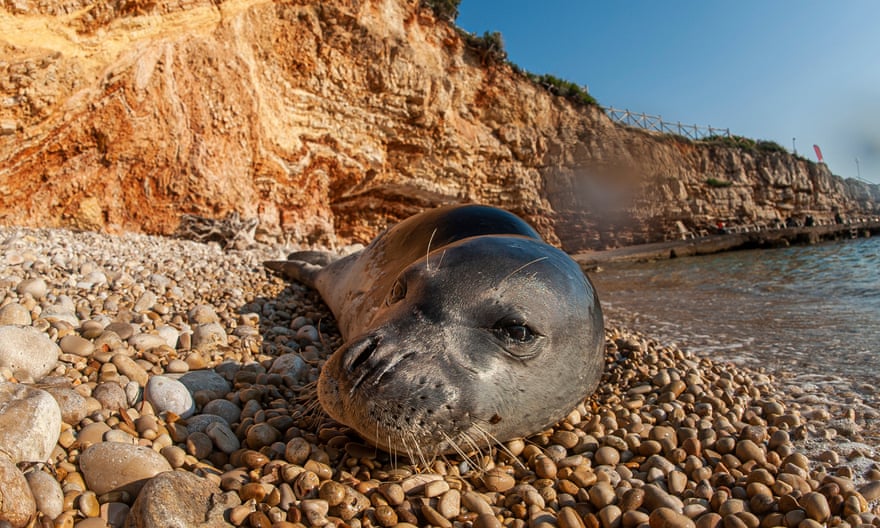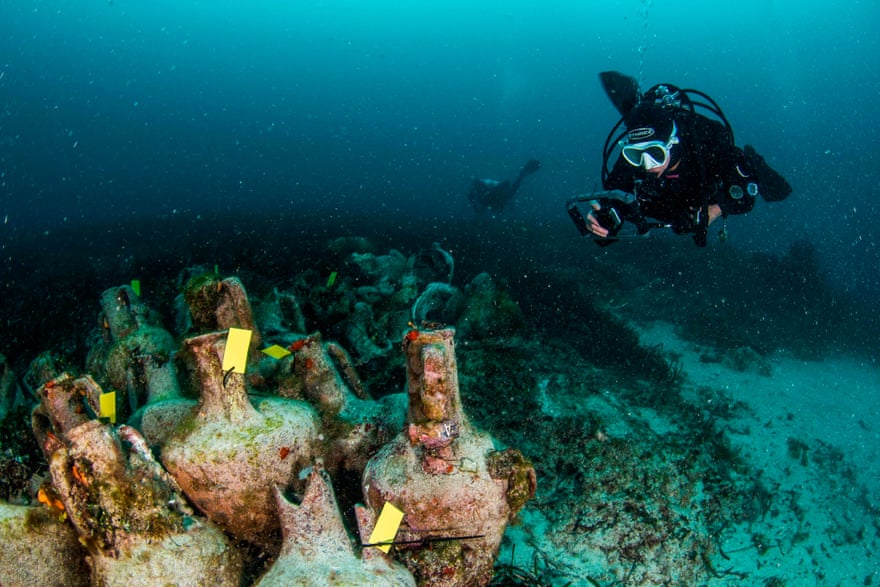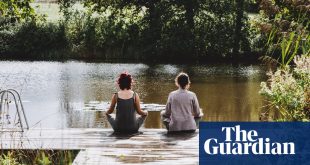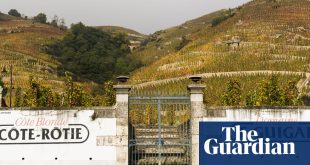I tiptoe along the dune-edged path, bare feet scratched by bone-white slivers of shell as the sun rises above the Aegean’s waves. Ahead of me a Mediterranean monk seal lounges on one of the sunbeds of Marpunta, a remote resort on the windswept southern tip of Alonissos. I watch as he scratches his stomach and yawns showing pointy teeth, and then I sneak off to breakfast.
Over crispy, deep-fried fouskakia pastries and almond-stuffed amigdalota cookies, waitress Eleni tells me that these seals (Monachus monachus) often come to sunbathe on the hotel’s shingle beach. “They are an endangered species – there are fewer than 700 of them left in the Mediterranean and most of them are here near Alonissos, so you could say we’re pretty lucky.”
I’d arrived here – on part of the Sporades archipelago off Greece’s eastern coast, which also includes Mamma Mia! island Skopelos – after an hour’s boat ride from Skiathos, to explore what National Geographic ranked in 2020 as one of the world’s most sustainable destinations. The accolade is due not only to a wide-scale campaign to eliminate plastic from the island, but also to the carefully patrolled 2,260 sq km national marine park – created to protect the seals and other endangered wildlife in 1992, it is the largest in Europe.

Eleni tells me that if I want to see more of these rare doe-eyed creatures, who were already being hunted in Roman times for their fur and oil, I should join a small boat cruise. So later that afternoon I climb aboard Planitis, a traditional two-masted trehantiri boat, on a trip into the marine park.
There are only three of us on board, and we lounge on cushioned seats, lapping up the sun as we glide past deserted coastlines dotted with sea caves, where the monk seals come each year to breed. “They actually thought the seals were extinct until a German zoologist discovered a colony here in 1976,” Captain Pakis tells us.
We stop off frequently to snorkel in the park’s pristine waters, where we spot scarlet starfish, gold-striped cow bream and even a loggerhead turtle – but no seals. “We are very careful never to approach the caves or disturb them,” Pakis tells us. “But sometimes they come and find us when we’re fishing, if they’re feeling peckish.”

Near the tiny, uninhabited island of Peristera, we plunge into the water once more. We’re hoping to spot the remains of one of the ships – they include a merchant vessel and its cargo of several thousand wine amphorae – that sank off this notoriously dangerous coastline sometime in the fifth century. The ships now belong to a protected area, known as Greece’s “Parthenon of shipwrecks”, which is the Mediterranean’s first underwater museum. Opened in 2020, it can be visited on organised trips. “It’s 30 metres down, so you need to dive deep,” Pakis jokes.
Over lunch – crisp chunks of cucumber and tomato with oregano-sprinkled slabs of feta, all doused in local olive oil – Pakis relates the legend of Jason and the Argonauts, who, he tells us, set out from Alonissos on their epic quest to find the golden fleece in the faraway land of Colchis.

Heads still full of gods and dragons, we anchor near Gioura, home to an ancient species of big-horned wild goat that has roamed here since neolithic times. This rugged island is also home to the “Cyclops cave”, where lamps, jewellery and other artefacts dating to 9000BC were discovered in 1992. Pakis tells us that monk seals, said to be protected by Poseidon and Apollo because of their love of sea and sun, were considered valuable in ancient times. “Archaeologists excavating a site in Rhodes harbour recently even discovered the first-century grave of a wealthy family buried next to a monk seal – it was probably the family’s pet,” he tells us.
He holds his finger to his lips and points. Ahead of us a monk seal lies on a half-submerged rock, its sleek black head shining like melted chocolate in the hot sun. Pakis whispers that these seals, the rarest of the 33 extant seal species, can dive to depths of up to 200 metres.

On land, the seal’s body seems comical – like a sausage with flippers – but when it slithers into the water it becomes a torpedo, flashing and spinning through the mirror-clear sea at breathtaking speed.
On my final day on Alonissos I drive inland, along a road that winds like a white ribbon through silvered olive groves, to Hora, the island’s ancient clifftop capital, which was partly destroyed by an earthquake in 1965.
Now beautifully renovated, Hora’s cobbled alleys are lined with traditional stone houses repurposed as craft shops – inevitably selling Monachus monachus T-shirts and keyrings – and charming, flower-studded cafes.

Photograph: Thislife Pictures/Alamy
On the cliff-edge terrace of Hayati cafe, I soak up breathtaking views of neighbouring Skyros, famed for its wild horses, and Skopelos, just a dark blue smudge on the distant horizon – as I lunch on crisp pies filled with wild greens, then fragrant caramelised milk pudding called kazan dipi.
Marpunta’s seal is back on the sunlounger again when I take a final dip in the sea that evening. As I tiptoe down to the beach, he rolls over on his back and gives a little sigh. I paddle gently, trying not to disturb him, and feel incredibly privileged to be on this remote island, where the world’s rarest seals – last descendants of a mythical race mentioned in Homer – feel safe enough to doze on sunbeds.
 Top Naija News: Nigerian News, Breaking News Nigeria and World News Top Naija News is a daily news publication in Nigeria, delivering the latest breaking news in Nigeria and around the world.
Top Naija News: Nigerian News, Breaking News Nigeria and World News Top Naija News is a daily news publication in Nigeria, delivering the latest breaking news in Nigeria and around the world.



